Inside the Ducati Factory
Part One – With Phil Aynsley
I’m guessing that at least some of you have visited the Ducati factory and gone on the tour around the production lines etc. You undoubtedly saw the very large and prominent blue & yellow entrance to the Engine Test/Race Dept. annex. You might have even had a peak in through the small window before the guide dragged you away.
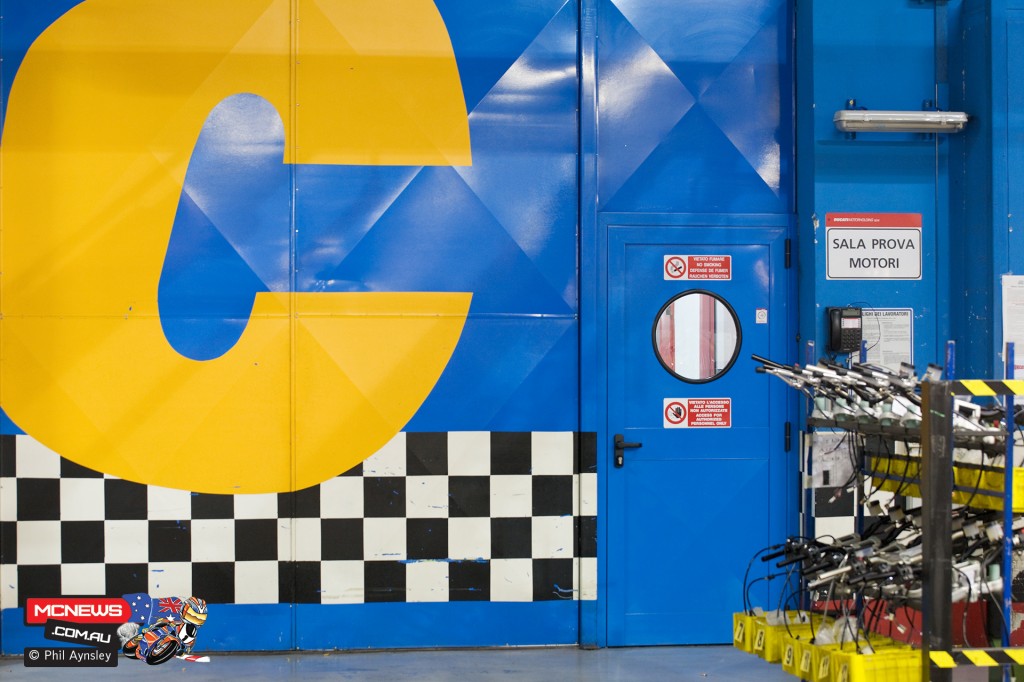
There is no missing where the Race Dept. is to found!
Well here is a look at some of what is on the inside…
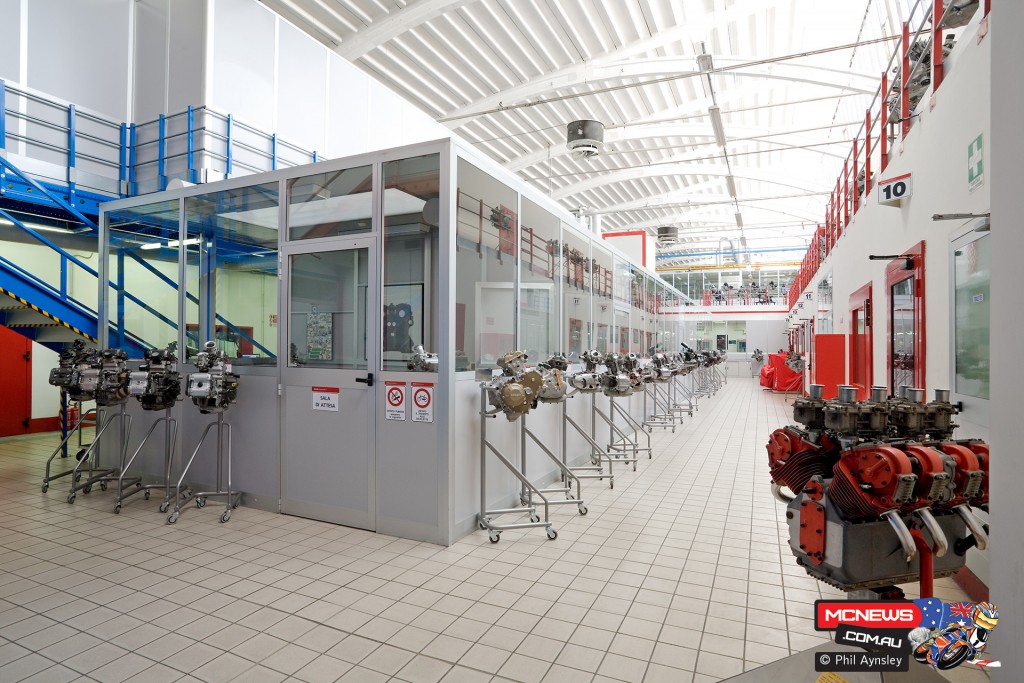
Offices and meeting rooms in the centre with engine test bays on the outside (and no, I wasn’t allowed to poke a camera in those).
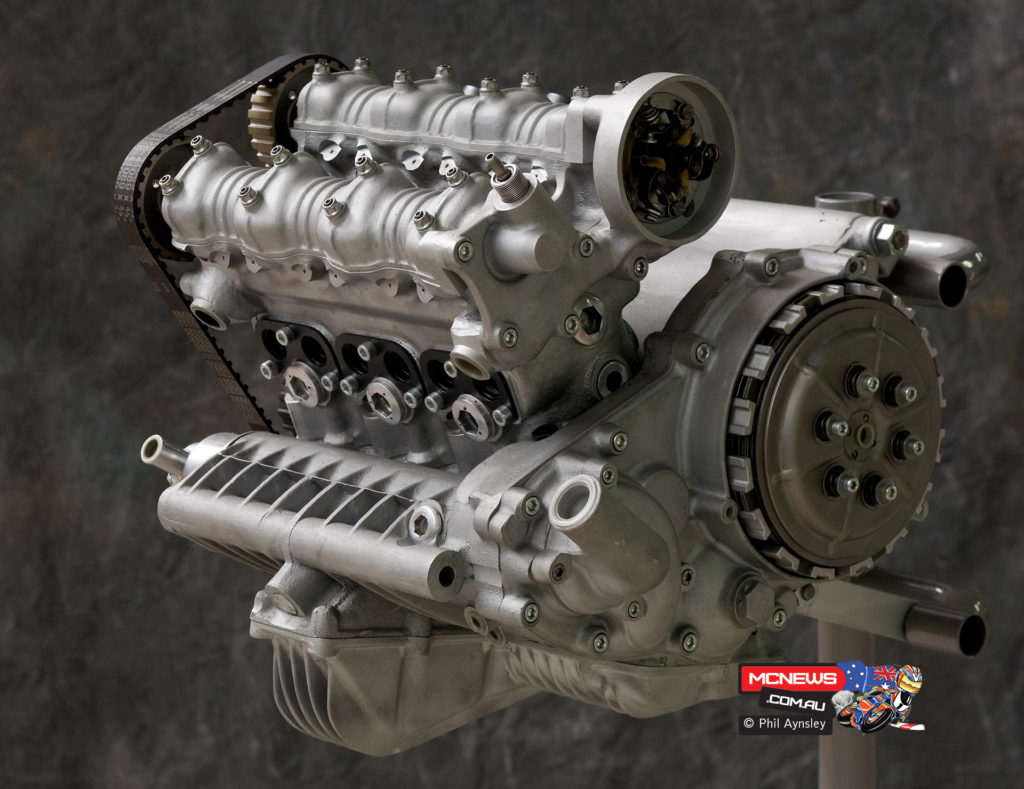
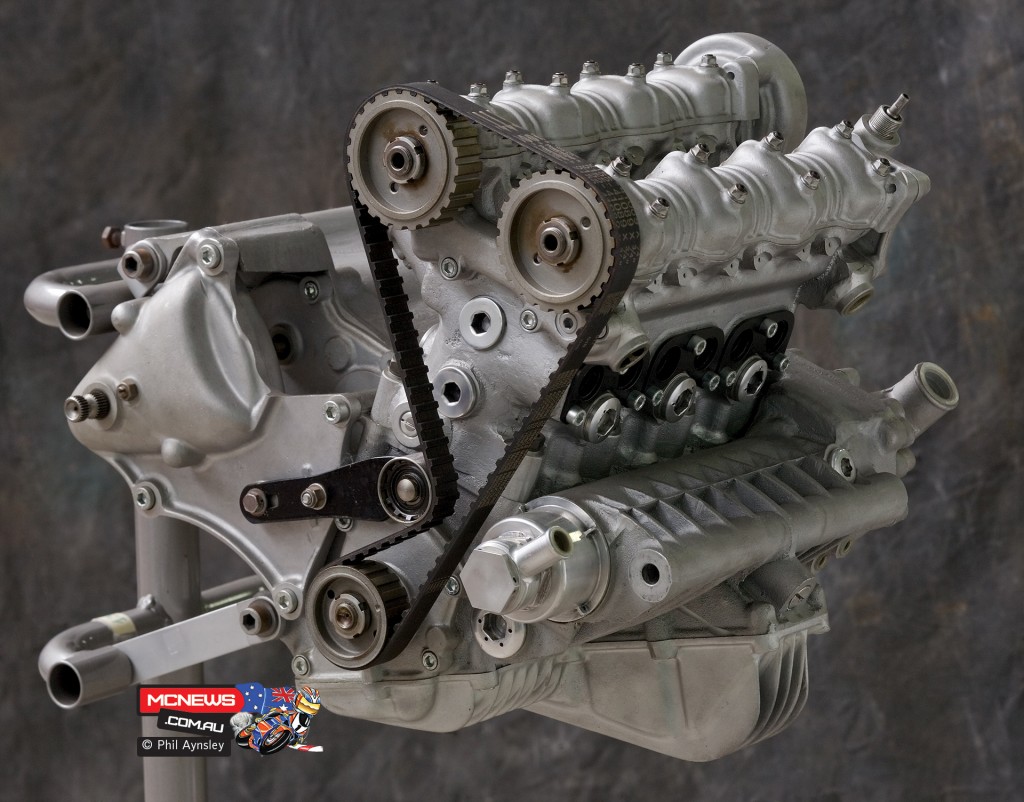
In 1971 the company’s management decided Ducati should challenge MV in the 350cc GP class. As Ing. Taglioni wasn’t in favour of the idea, the Ricardo firm in England was commissioned to produce a design. The result was this water-cooled, belt-driven DOHC triple. Four-valve heads (with six header pipes) and a seven-speed gearbox were used. Despite development during 1972 the motor only reached 50hp at 14,500rpm. The project was abandoned the following year with the motor never having gotten past the bench test stage.
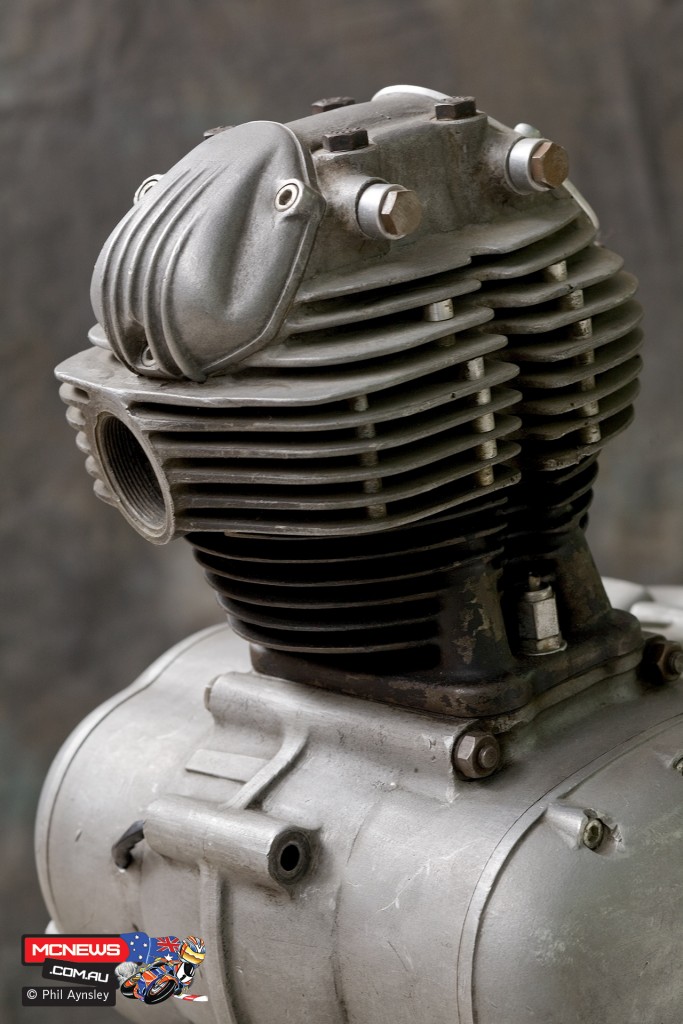
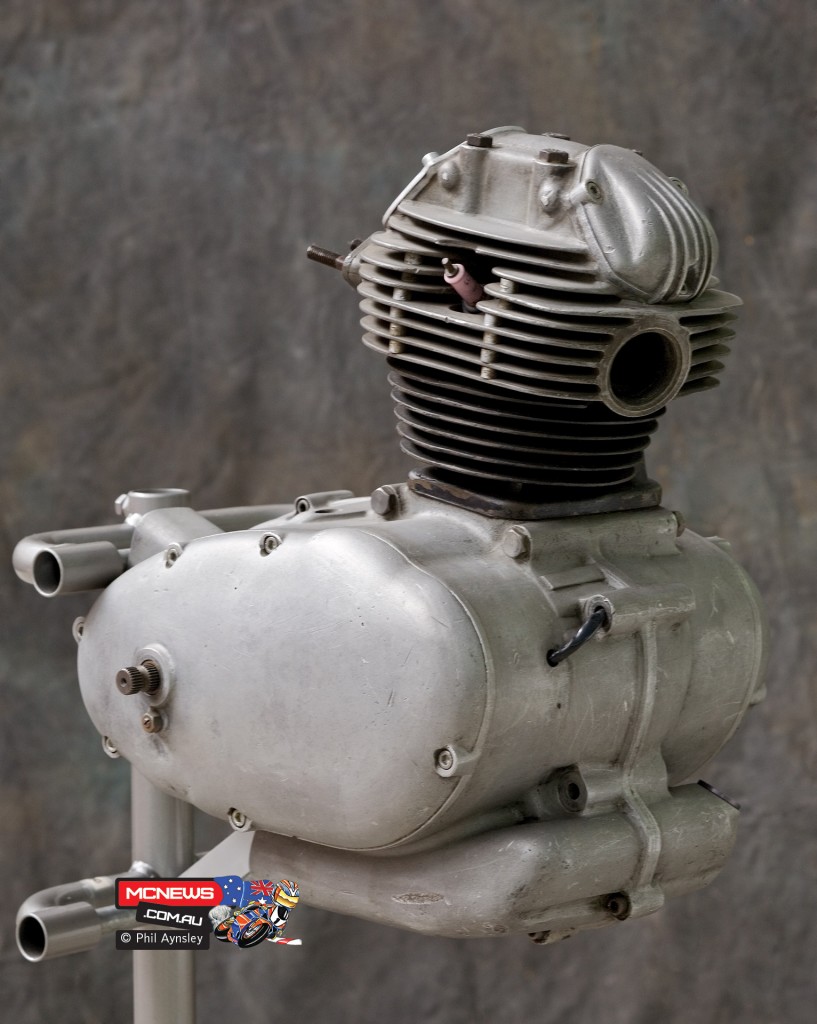
This 1957 prototype design for a pushrod 125 never made it into production.
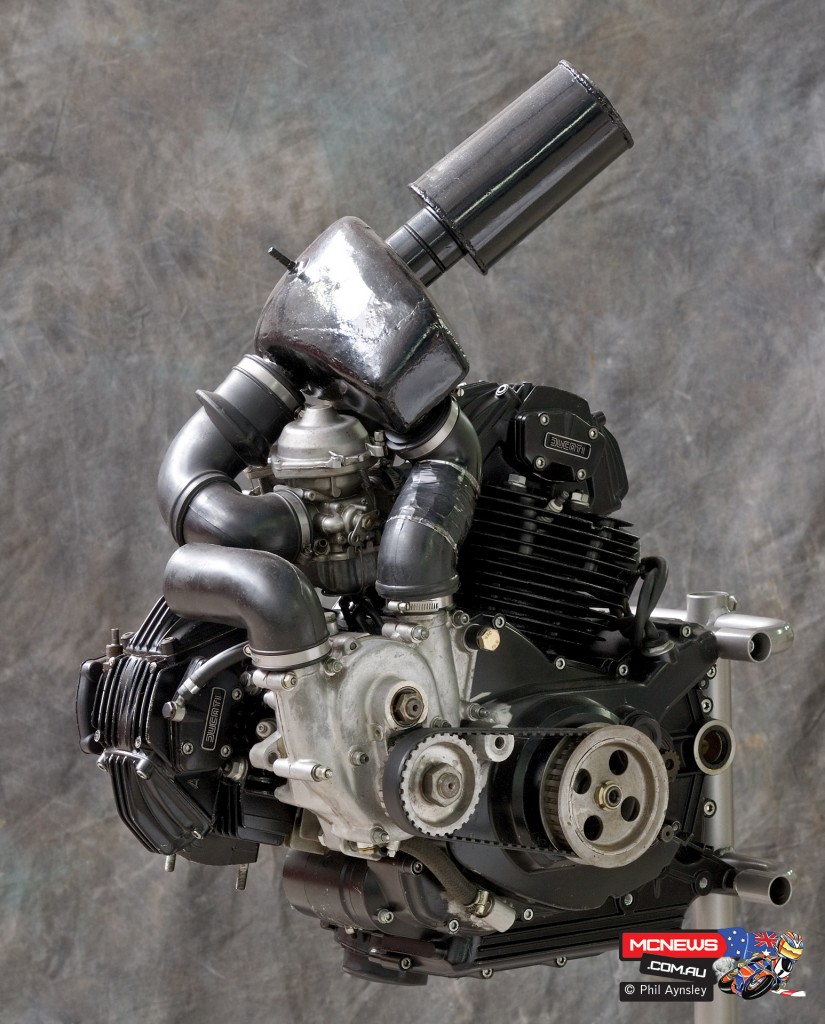
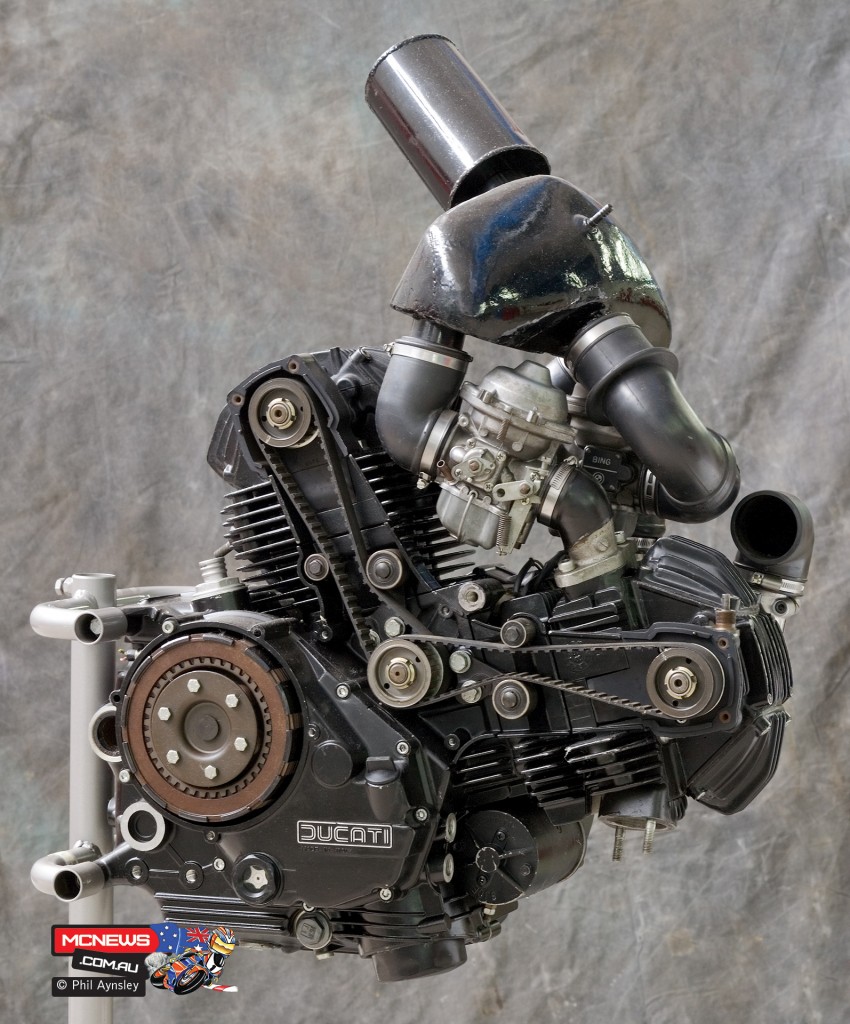
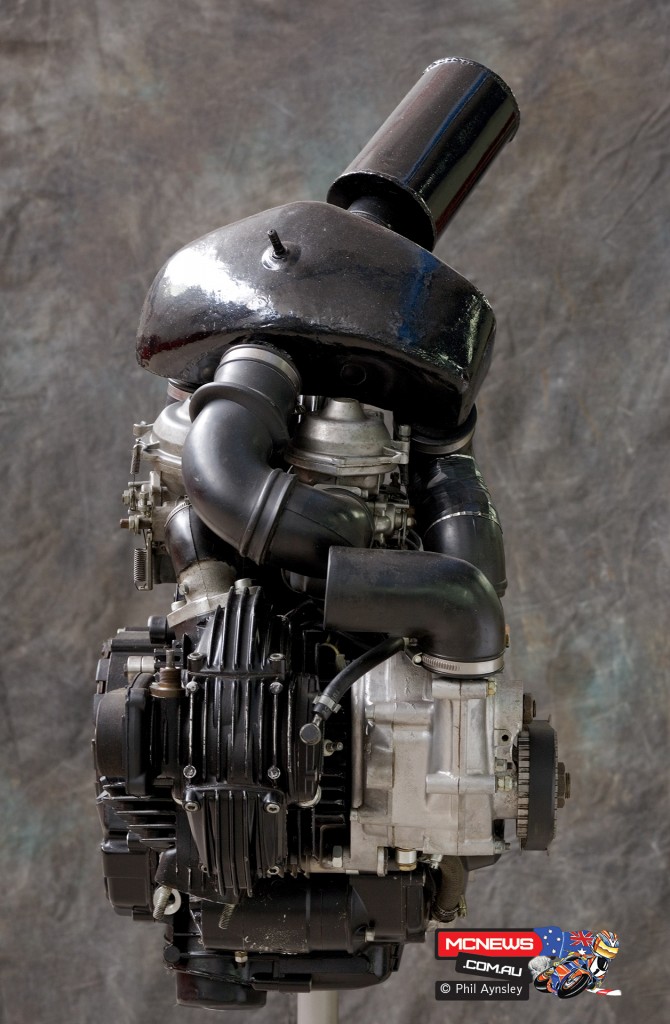
Both turbo and supercharging were experimented with by Ing. Taglioni. This is a 350 Pantah motor fitted with a supercharger. The turbo version is rumored to have spectacularly self-destructed during bench testing when the waste-gate stuck open.
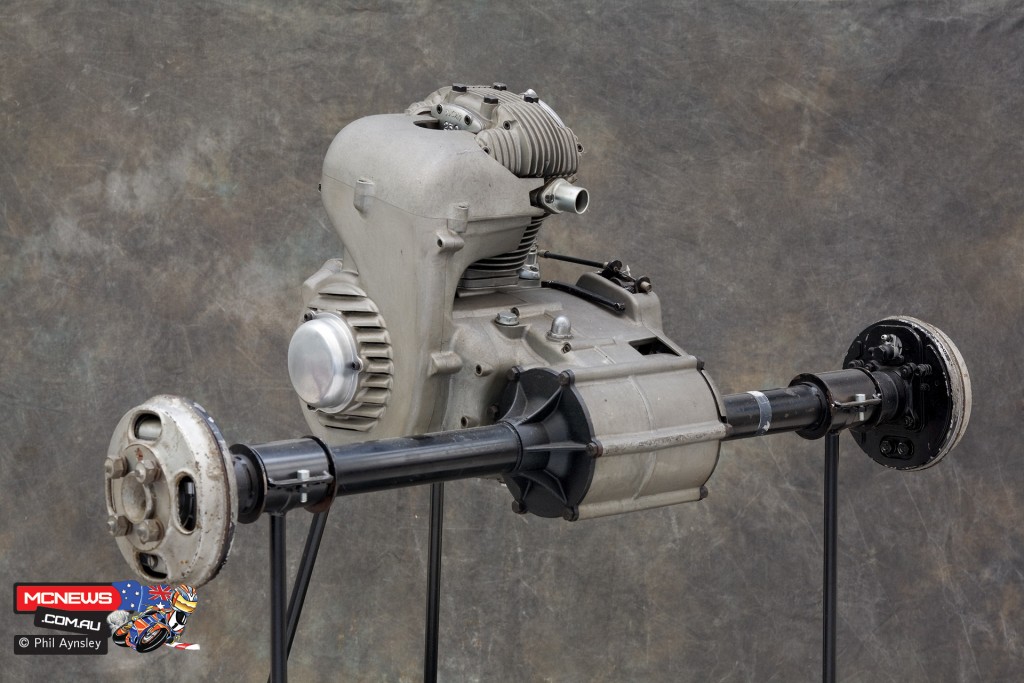
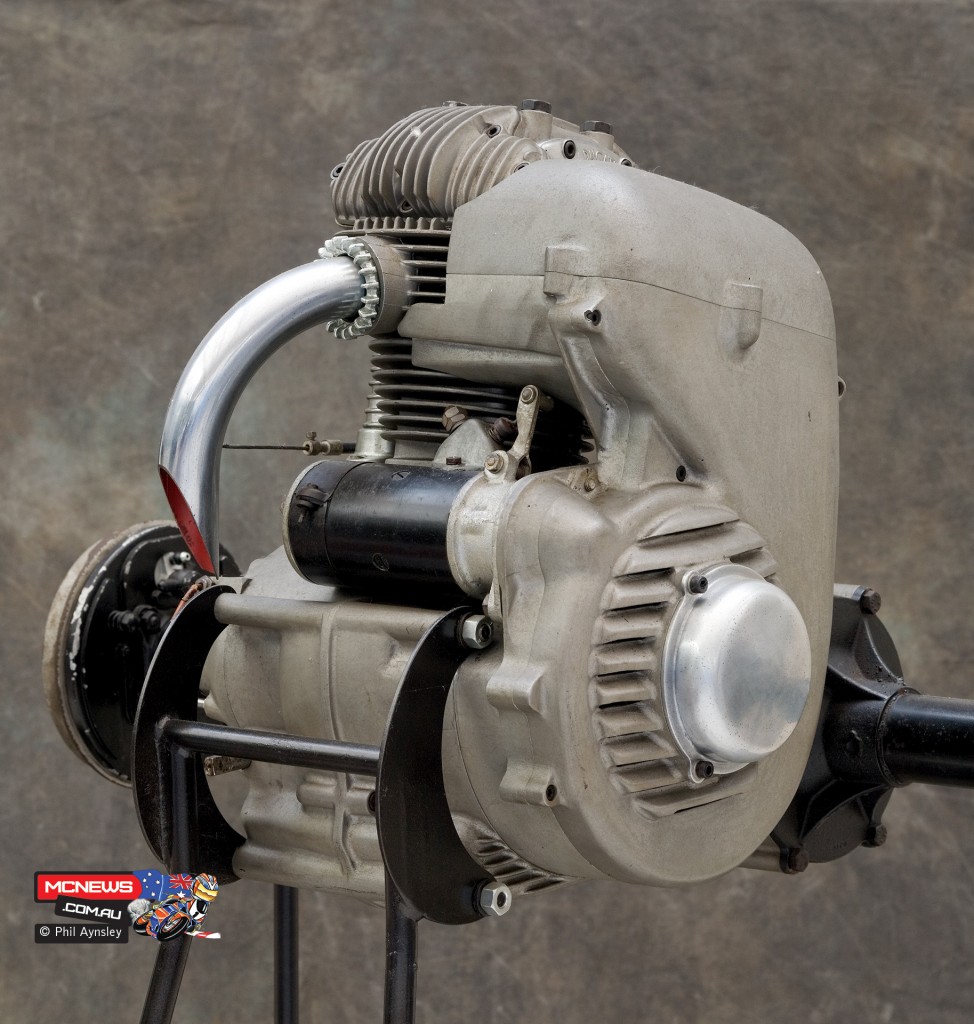
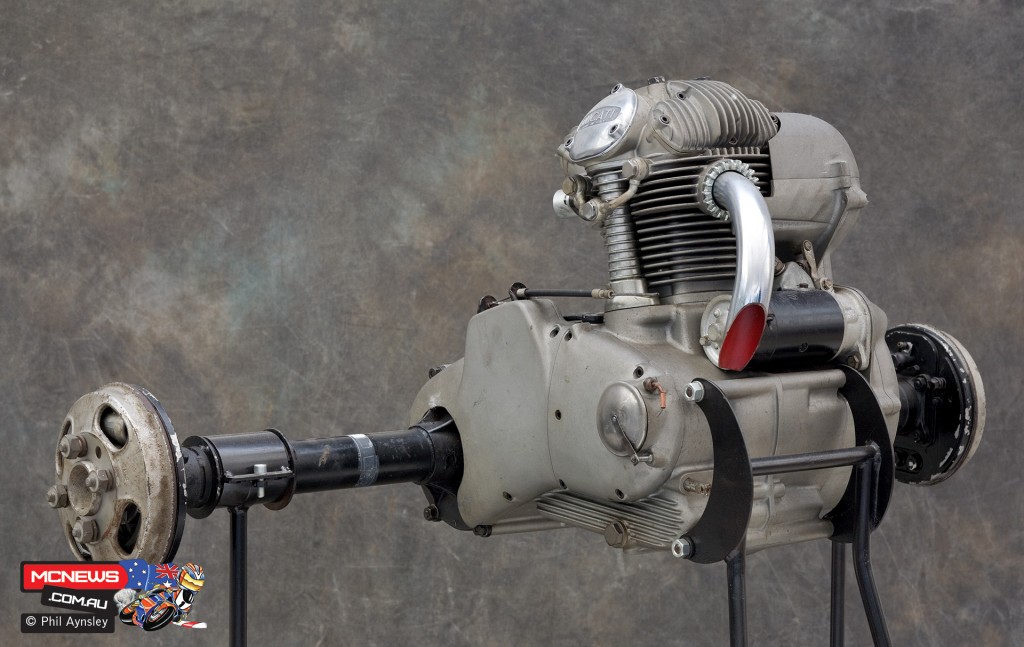
Nearly all the Italian manufacturers produced light 3-wheeled utility vehicles. Ducati’s were the small 2-stroke Fattorino and much larger Muletto – powered by 175 (1957), then 200cc (1958) OHV 4-stroke motors. This prototype OHC 200cc version was tested in the late ’50’s for a revised version of the Muletto.
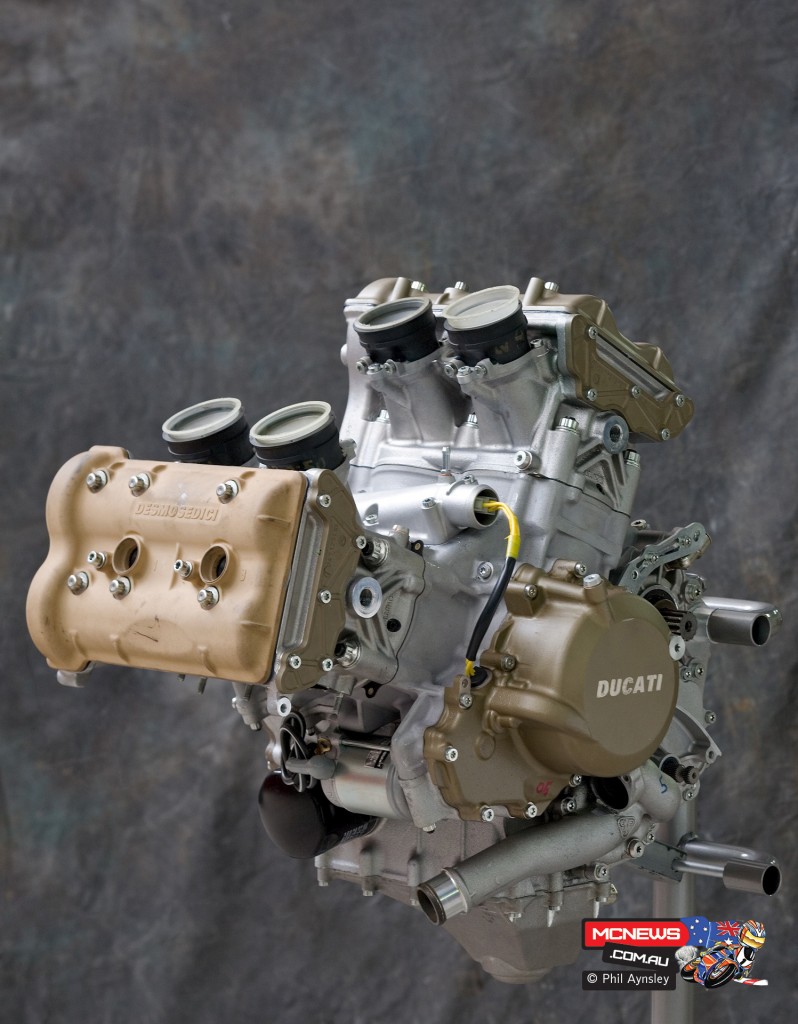
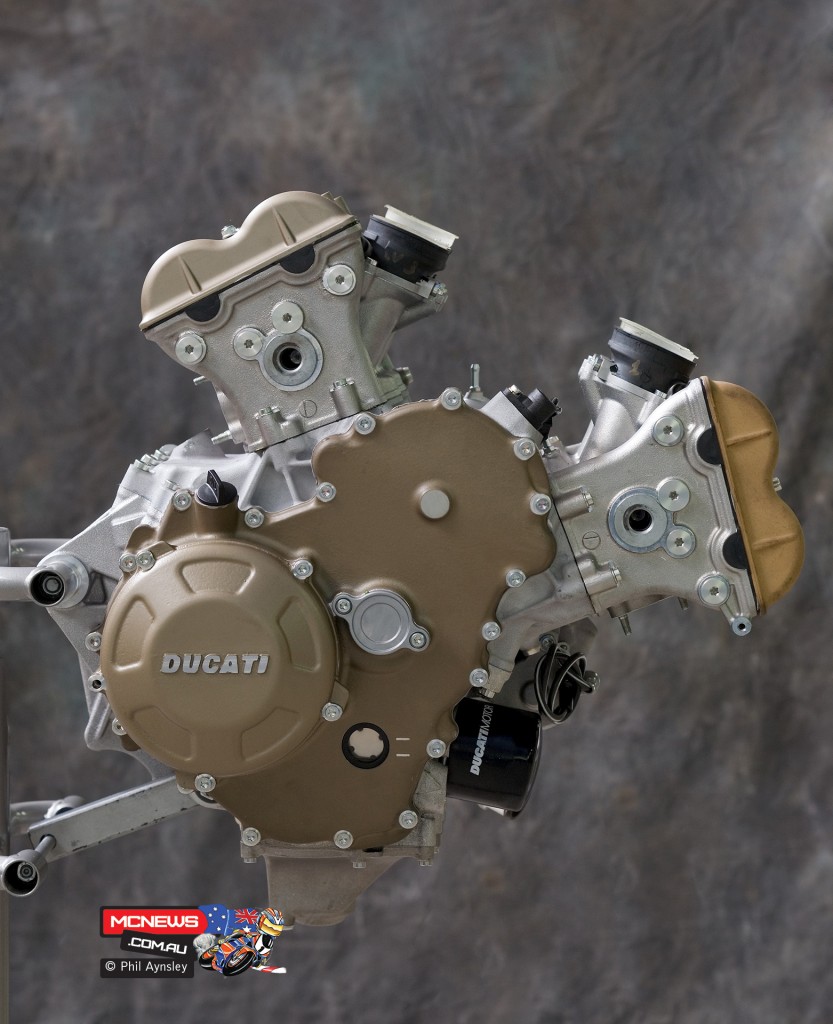
One of then many development motors for the Desmosedici RR.
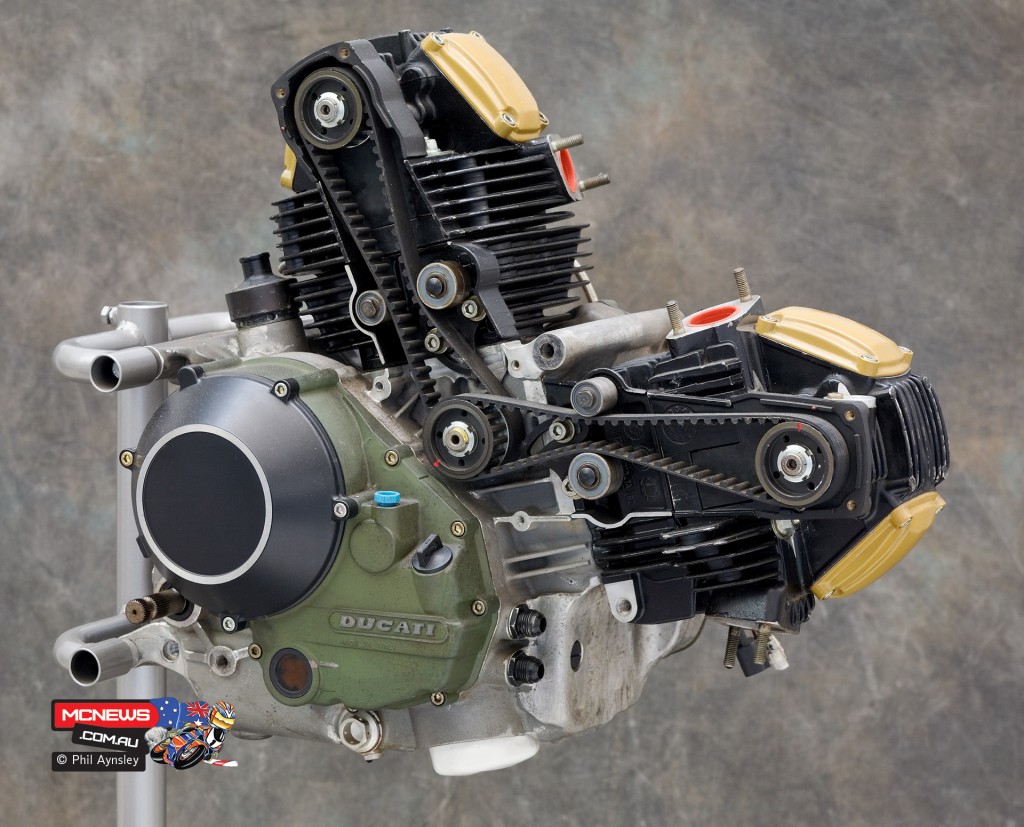
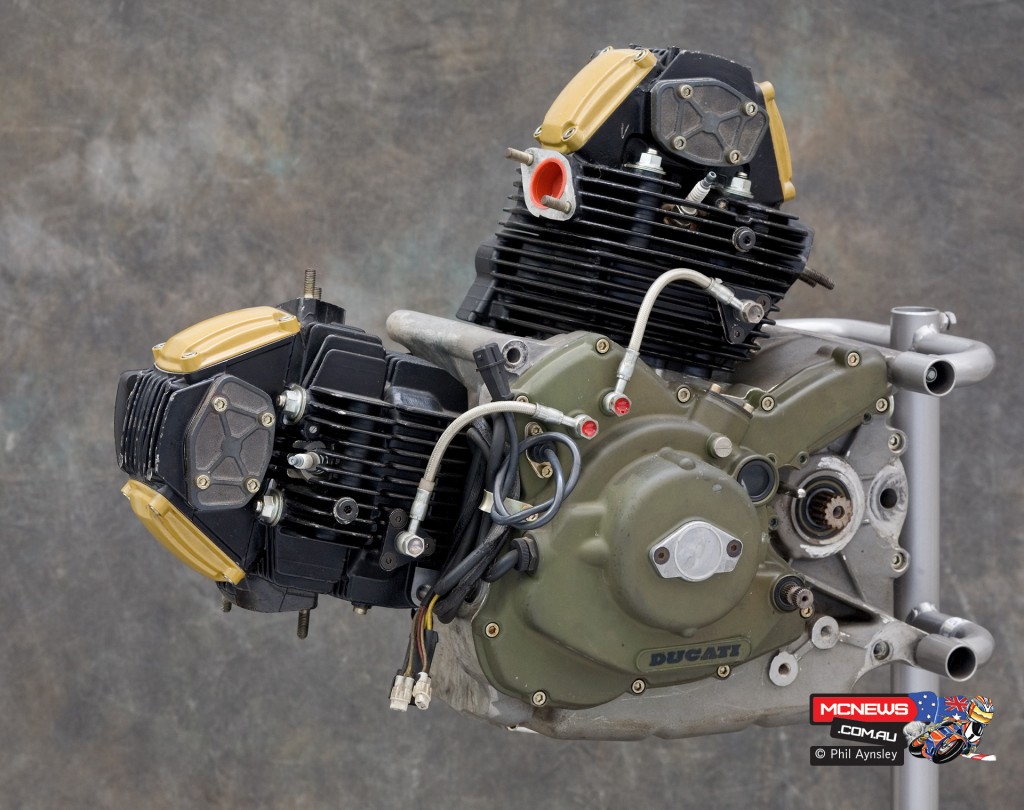
Ducati had a long history of providing the power plants for Cagiva’s Paris-Dakar Elefant race bikes. This is a 904cc motor from one of the 1990 bikes. Rider Edi Orioli won that year on an Elefant.























